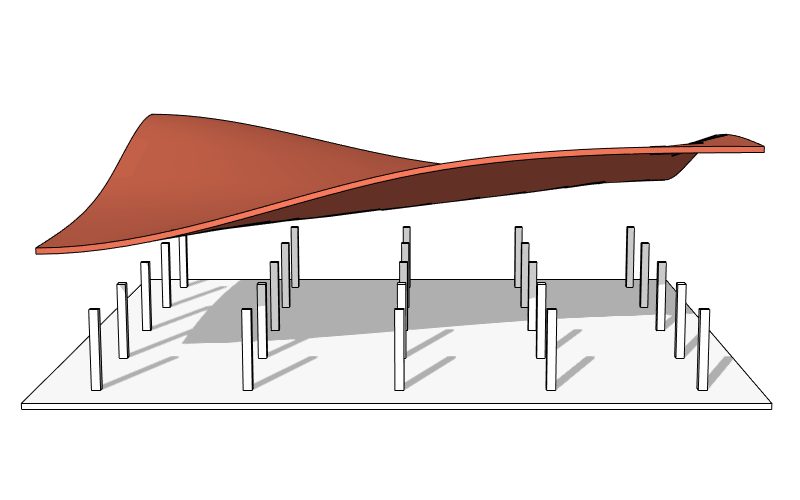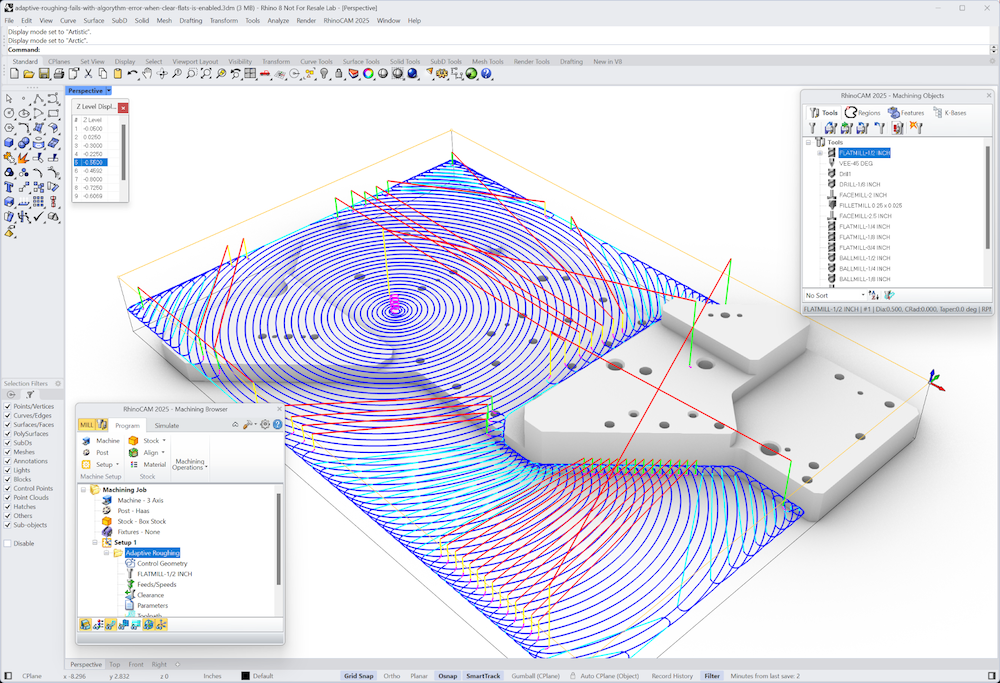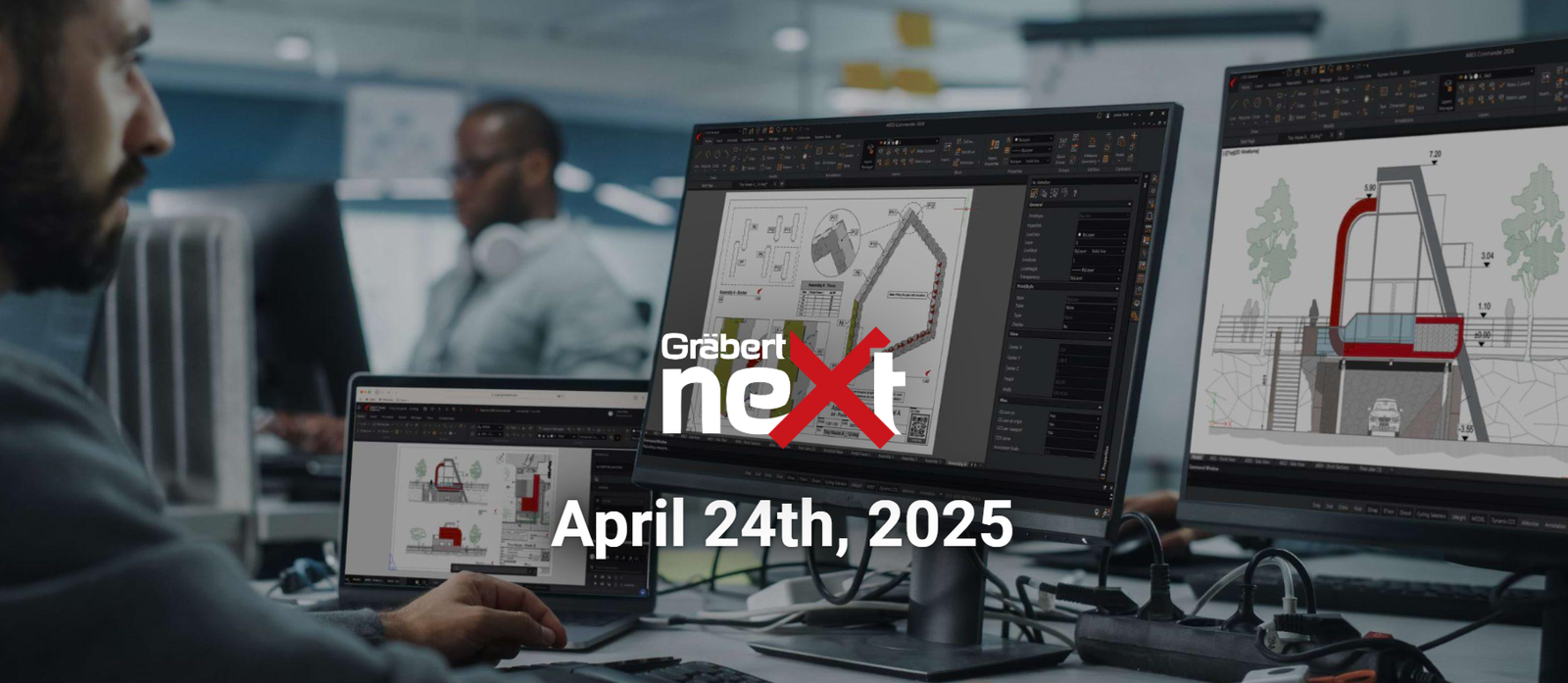Your Cart is Empty
Customer Testimonials
-
"Great customer service. The folks at Novedge were super helpful in navigating a somewhat complicated order including software upgrades and serial numbers in various stages of inactivity. They were friendly and helpful throughout the process.."
Ruben Ruckmark
"Quick & very helpful. We have been using Novedge for years and are very happy with their quick service when we need to make a purchase and excellent support resolving any issues."
Will Woodson
"Scott is the best. He reminds me about subscriptions dates, guides me in the correct direction for updates. He always responds promptly to me. He is literally the reason I continue to work with Novedge and will do so in the future."
Edward Mchugh
"Calvin Lok is “the man”. After my purchase of Sketchup 2021, he called me and provided step-by-step instructions to ease me through difficulties I was having with the setup of my new software."
Mike Borzage
The Edge: Alvin Huang, Synthesis Design + Architecture
July 29, 2014 5 min read
Novedge is a proud sponsor of the 2014 ACADIA Conference and I am thrilled to be able to interview Alvin Huang, this year's conference Co-Chair.

Novedge: Tell us a bit about who you are and what you do
Alvin Huang: My name is Alvin Huang, and I am an Architect, Designer, Researcher, and Educator. I lead a small design practice called Synthesis Design + Architecture. I also teach design studios and lead research seminars at the USC School of Architecture where I am a tenure-track Assistant Professor.

Novedge: What is the vision behind Synthesis Design + Architecture?
Alvin Huang: Synthesis is a small boutique design firm that engages design as an opportunity to challenge convention and explore innovative and novel methods of design and fabrication. The name Synthesis is very much inspired by its dictionary definition – we see architecture or design as the bringing together of many different elements to produce a coherent whole. This holds true whether those elements are different constraints or contending ideologies or literal assemblies of parts. We are really interested in the relationship between form and performance – how what something looks like is informed by and informs the things that it actively does. We see function as something far greater than utility – and are very interested not only in terms of structural and environmental performance, but also visual and material performance as well.
//player.vimeo.com/video/76717165
PURETension: The Volvo v60 Pavilion by Synthesis Design + Architecture from Synthesis Design + Architecture on Vimeo.
Novedge: Your practice combines different disciplines. How do they inform each other?
Alvin Huang: In reality we are one thing – and that is designers. However we pursue design through the creation of innovative buildings, facades, interiors, pavilions, public art installations, furniture, and objects. However, the thing that ties all of these various scales and types of work together is the design research that is embedded into all of these projects. We see design as the application of research. What I produce as a professional in Synthesis is highly inspired by the teaching and research I produce as an academic at the USC School of Architecture, and vice versa. We like to think of what we do as applied research (or experimental practice) that embraces digital technology as a way of thinking about physical reality in a performative way. By performative, I mean that we are interested in how the physical things we design do work (beyond utility). How do these things perform structurally, environmentally, materially, or visually?

Novedge: What is a recent project that you worked on?
Alvin Huang: To give a sense of the range of work that we do, I'd like to share a building, a facade, a pavilion, and an interior installation. The building (The Groove @ CentralWorld in Bangkok, Thailand) is a 12,000 sqm retail and lifestyle extension to the 3rd largest mall in the world. The facade (CentralPlaza in Lampang, Thailand) is a feature facade for a 160,000 sqm shopping center in rural Thailand. The pavilion (Pure Tension Pavilion) is a 30sqm portable solar-powered charging station for the new Volvo V60. The interior (Chelsea Workspace) is a tiny 7sqm interior fit-out in the home office of a private client in London.


Clearly the 4 projects range not only in scale and typology – but also in materiality. However, they are all born of the same lineage of design research – an interest in design that is driven by associative geometry, material performance, peformative patterning, optical engagement, and digital craft. Clearly, the amount that we are able to experiment varies in each of the projects – arguably diminishing as we increase in scale – however, the intentions remain the same.

Novedge: What software do you use?
Alvin Huang: We use a range of software…for modeling and drawing this includes Rhino, Grasshopper, AutoCAD, Autodesk Maya, and 3D Studio Max. We're also using tons of plug-ins for Grasshopper including Kangaroo, Karamba, LunchBox, Weaverbird, and many more. The number of plug-ins and accessibility of Grasshopper is just fantastic. Also, I'm a designer – not a programmer – so visual programming is a way for me to really think diagrammatically about the geometric relationships that we are working with. Of course, we are also extremely interested in drawings and representation as well, and use the entire Adobe suite.

Novedge: What can designers do with the new technology that was really hard or impossible to do before?
Alvin Huang: Of course the obvious answer here is about the move towards digital fabrication and the ability to go from "file to factory". However, I think the fundamental shift that is happening right now is what I would call a shift to the "post-digital". We're moving into an era when the fact that we work digitally is now a given, not a novelty nor an objective. It is a fundamental fact about the way that we work, so we no longer need to define the way we work by it. At first the appearance of these tools were really as tools – CAD was a way of automating existing methods of production for speed and precision. Then we began working with them as techniques – the methods of working that the tools provided allowed a maneuverability for certain things to be modeled or drawn that could not have been done without them. I think what is important in our work is how tool and technique are now driving a new intuition – one that is informed by a sense of craft with how to work with these tools and techniques to achieve desired design outcomes.


Novedge: We are looking forward to the 2014 ACADIA Conference. What have you learned so far as its Co-Chair?
Alvin Huang: That I never want to do it again! Ha. Just kidding. It's been an amazing experience so far, but an incredible amount of work and planning goes into it. ACADIA really is an incredibly talented and diverse community. It's been great to work with an incredible team – the ACADIA board has been super supportive, while my fellow co-chairs David Gerber (www.djgerber.com) and Jose Sanchez have really been great colleagues. All three of us are faculty at the USC School of Architecture, and obviously all three of us are producing and teaching in the realm of computational design within architecture, yet the three of us are completely different. I would say we are in a way representative of what I have come to discover and learn about the ACADIA community – though we are all very much committed to exploring the applications of computation in architecture, the nature of the work being explored is very diverse and spans many topics and interests.

I think in that way, the three of us are in some ways a small microcosm of the ACADIA community. David is very much an academic focused on the research of multi-disciplinary design optimization, multi-agent systems, and system integration through his extensive writing and publications. Jose is a designer and programmer with an interest in exploring the intersection of architecture and gaming through installations, projects, and his expansive open source library of coding tutorials. I am a designer that is exploring the application of computational processes through building and making. There's just such an amazing amount of diversity and productivity in the community and the conference is when you get to see it all come together.
To read more about ACADIA 2014 click here, and connect on Facebook and Twitter.
To see Alvin's work, head over to Synthesis Design + Architecture and follow him on Facebook and Twitter.
And don't forget to follow Novedge on Twitter!
Related articles
Also in NOVEDGE Blog

Enhance Your Designs with VisualARQ 3: Effortless Geometry Extensions for Walls and Columns
April 30, 2025 8 min read
Read More
MecSoft Unveils RhinoCAM 2025 and VisualCAD/CAM 2025 with Enhanced Features
March 08, 2025 5 min read
Read MoreSubscribe
Sign up to get the latest on sales, new releases and more …






